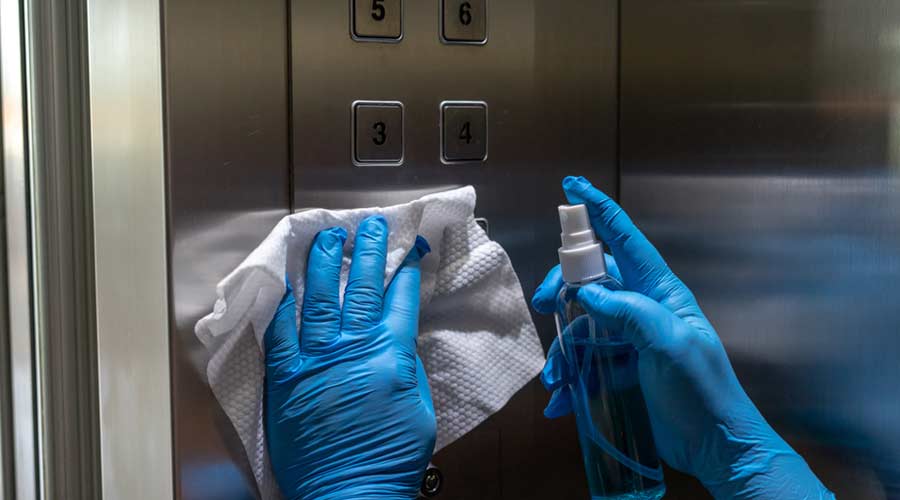 Log In
Log In
The work of a facility cleaning manager is anything but dull. Not only must they ensure critical buildings such as schools, hospitals, government offices, and other facilities are properly cleaned and managed, but they must also balance razor-thin budgets, the spirits and egos of both occupants and staff, and hiring and retention woes.
The up-and-down nature of facility management is exactly why Facility Cleaning Decisions conducts an annual survey. Each year, the responses provided by facility cleaning managers help others in similar positions to make strong, informed decisions. It's a simple, but selfless act made by a profession comprised of compassionate people. The “2025 Facility Cleaning Decisions Management Survey” continues this tradition of providing useful insights that will no doubt help many.
The current employment situation in the United States could be described a variety of different ways. To sum it up in one word would be something like “frustrating.” In recent years, there were more job openings in the United States than workers available to fill those positions, according to the U.S. Chamber of Commerce, that gap finally closed nationwide in April 2025, but it still exists in some industries and areas of the county, according to the U.S. Chamber of Commerce. Meanwhile, the labor force participation rate in the United States has steadily declined since 2005.
The impact of these trends shows up early and often in this year’s management survey responses. When asked to rate a list of employment issues by how much they impact their cleaning departments, facility cleaning managers say, “hiring adequate employees,” “employee absenteeism,” and “staff retention” are most impactful. Respondents provided the exact same top three in the 2024 survey, but 2023 results swapped hiring and absenteeism for “employee tardiness” and “lack of adequate training.”
Employees are any facility cleaning manager's greatest resource. Just over half (53 percent) of facility cleaning managers feel they have the resources necessary to complete all the cleaning tasks their facility requires. That represents a noticeable decline from both 2023 and 2024, when 69 percent of respondents answered “yes” to the same question each year.
While that statistic indicates facility cleaning managers are having a hard time finding workers who do a good job, show up when scheduled, and stick around, other responses indicate employment is not that big of an issue. Just over half (53 percent) of respondents say they plan to add staff to their department in the next 12 months, and only 46 percent said they planned to do so in the 2024 survey. The average tenure of janitors working for facility cleaning managers who completed the survey is also over nine years, suggesting good stability considering the median employee tenure of workers in the United States in early 2024 was 3.9 years, according to the U.S. Bureau of Labor Statistics.
Perhaps one reason janitors seem to be sticking with their employers for a while is the fact that facility cleaning managers are willing to invest in their growth. The great majority of respondents (86 percent) in the 2025 survey say they support employee certification and accreditation or offer advancement opportunities to frontline staff. That’s a sharp increase from 2024 and 2023, when an already sizable majority of 69 and 67 percent answered “yes” to the question, respectively.
Staff training and advancement opportunities aren’t the only noteworthy investments facility cleaning managers are making. Technology is crucial to modern facility management, and the way these operations are embracing different offerings suggests they agree. It’s no surprise smartphones remain the most popular technology used by cleaning departments, with 71 percent reporting utilization. Meanwhile, two-way radios, which were the second most common technology in 2023 and 2024, dropped to third this year.
Notably, 61 percent of respondents report using software for job scheduling, workloading, inspections, etc., making it presently the second most common technology they employ. But while software is being used, it doesn’t appear that facility cleaning managers are entirely satisfied with it. Just 26 percent felt they would recommend, specify, or purchase software, compared to 2020 when 40 percent of respondents made software one of their selections.
One technology that has been frequently discussed is autonomous equipment. Much of the hesitation to implementing this equipment in recent years was due to cost and return on investment, but productivity advantages paired with current staffing struggles seem to outweigh those perceived high price tags. Just three years ago, only seven percent of departments were utilizing robotic floor and carpet equipment. In 2025, 21 percent of facility cleaning managers reported use, which represents an impressive trend.
Robotic equipment should, in theory, reduce staffing needs, which is noteworthy at a time when 55 percent of those surveyed reported labor as their biggest expense, followed distantly by product/equipment purchasing and maintenance/upkeep, each at 18 percent.
Although allocation of budgets won’t likely change much, the amount diverted to each of these categories might go up as the year goes on. Proposed tariffs are threatening product and part prices/availability, and many departments are facing significant minimum wage hikes.
For example, in early 2025, the Los Angeles City Council approved a minimum wage package that would require hotels with more than 60 rooms and companies doing business at the Los Angeles International Airport to pay their workers $30 an hour by 2028. If these increases permeate the industry, budgets will require adjustments.
The good news is at least the majority of budgets aren’t being slashed. About two-thirds of respondents (64 percent) report their budget wasn’t reduced in 2024 or early 2025. While this statistic isn’t as encouraging as it was in 2024 — 80 percent reported budget stability — it could be worse. When asked to describe their operations budget this year, 39 percent of managers called it “fluid,” which means it adjusts each year relative to cleaning demand.
A small portion of the survey asked facility cleaning managers to make future projections. When asked if they expected several different variables pertaining to their department to increase, decrease, or stay the same in the next 12 months, “stay the same” was the most common response. This pertained to training opportunities, departmental budgets, the amount of area cleaned, product purchasing, and more. When asked to rank, in order, their top three management priorities over the next 12 months, improving staff performance and cleaning was the clear top choice, followed by increasing budget dollars.
These are just some of the more noteworthy industry trends, but there's much more in the survey, which as a whole shows facility managers are optimistic. Log in to access and download this full study and all the results.
Jake Meister is the senior associate editor of Facility Cleaning Decisions, Contracting Profits and Sanitary Maintenance magazines, as well as CleanLink.com.

 Celebrating BSCAI's 60th Anniversary eBook
Celebrating BSCAI's 60th Anniversary eBook The Down and Dirty on Cleaning in Virus Season
The Down and Dirty on Cleaning in Virus Season How Surfactant Use is Expanding in Commercial Cleaning
How Surfactant Use is Expanding in Commercial Cleaning